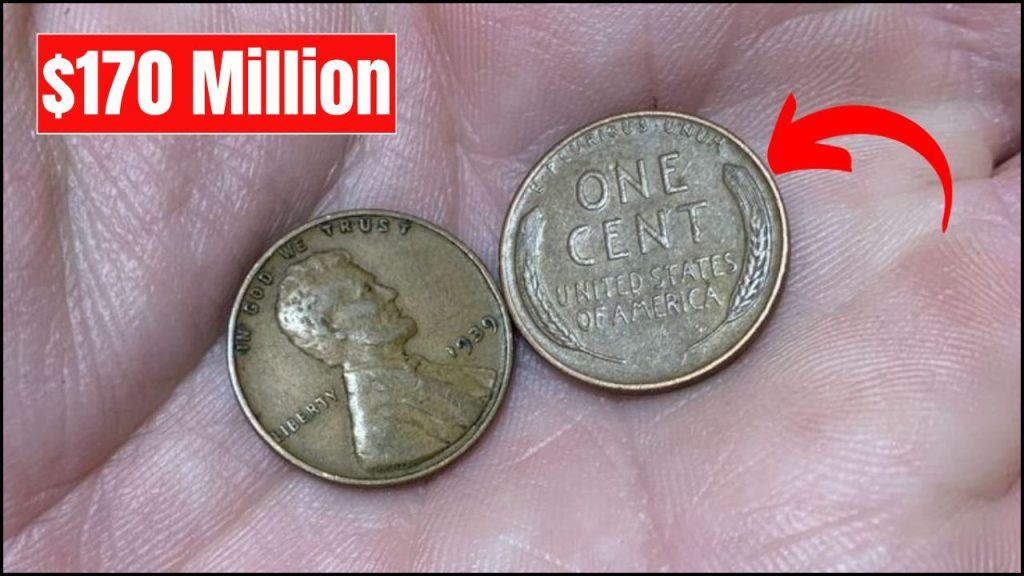
The humble Lincoln Wheat Penny, once a regular part of American pocket change, has become one of the most coveted coins in the numismatic world. Specifically, the 1943 copper version of this penny is believed to be worth a staggering $170 million. What makes this tiny piece of currency so astonishingly valuable isn’t just its age or design, but a fascinating combination of historical events, minting errors, and extreme rarity. The idea that one of these rare coins could still be hiding in a coin jar or a forgotten drawer continues to stir excitement among collectors and curious coin hunters alike.
A Glimpse into History
Introduced in 1909 to commemorate President Abraham Lincoln’s 100th birthday, the Lincoln Wheat Penny broke tradition by becoming the first U.S. coin to feature a real person’s portrait. Prior to this, American coins typically displayed symbolic figures like Liberty. Designed by Victor David Brenner, the penny featured Lincoln’s profile on the front and a pair of wheat ears enclosing the words “ONE CENT” on the reverse. This iconic design quickly gained popularity and was produced for nearly five decades.
A War-Time Coining Error That Created a Treasure
In the midst of World War II, copper became a critical material for manufacturing ammunition and other essential military supplies. To support the war effort, the U.S. Mint switched to using zinc-coated steel for pennies in 1943. However, in the process of making this transition, a few copper planchets (coin blanks) from 1942 were inadvertently left behind in the machinery. These were then stamped with the 1943 date, unknowingly creating one of the most valuable minting errors in U.S. history.
It’s estimated that only about 20 to 40 of these 1943 copper pennies exist today. Their scarcity, combined with the historical backdrop of World War II and the nature of the mistake, makes these coins incredibly valuable and historically significant.
What Makes the 1943 Copper Penny So Valuable?
Several key factors contribute to the jaw-dropping value of the 1943 copper Lincoln Wheat Penny:
- Unmatched Rarity – With fewer than 40 known to exist, this coin ranks among the rarest U.S. mint errors.
- Historical Significance – Its connection to WWII and the material shortage during the era makes it more than just a collector’s item—it’s a piece of history.
- Condition and Preservation – Well-preserved specimens are especially prized. The better the condition, the higher the value.
- Public Fascination and Mystery – The idea that one could still be found in circulation or an old collection fuels ongoing curiosity and demand, further driving up its market price.
The Lincoln Wheat Penny Valued at $301 Million, Still in Circulation?
The Lincoln Wheat Penny Valued at $14 Million, Still in Circulation?
The Lincoln Wheat Penny Valued at $9.6 Million, Still in Circulation?
The Lincoln Wheat Penny Valued at $121 Million, Still in Circulation?
How to Identify a Genuine 1943 Copper Penny?
With such a high value, the 1943 copper penny has attracted numerous counterfeits. If you think you may have one, here are some basic identification tips:
- Magnet Test: Steel pennies from 1943 will stick to a magnet, while copper ones will not.
- Weight Check: A genuine 1943 copper penny weighs about 3.11 grams, compared to the 2.7 grams of the steel version.
- Color and Appearance: Copper pennies have a reddish-brown color, unlike the silver-grey appearance of steel coins.
- Authentication: Due to the prevalence of fakes, professional verification by a certified coin grader or numismatist is strongly recommended.
Other Valuable Lincoln Wheat Pennies
While the 1943 copper penny is the crown jewel, it isn’t the only Lincoln Wheat Penny that collectors chase. Some other notable examples include:
- 1909-S VDB Penny: The first year of the Lincoln cent featured designer Victor David Brenner’s initials (VDB) on the reverse. The 1909-S version, minted in San Francisco, is exceptionally rare and can fetch thousands of dollars.
- 1955 Double Die Penny: Known for its visibly doubled text and date, this error coin is another favorite among collectors and is valued in the thousands.
- Exceptional Condition Wheat Pennies: Even common years can be valuable if they are in uncirculated or mint state condition.
The Allure of the Search
Perhaps what keeps the legend of the 1943 copper penny alive is the slim—but exciting—chance that one might still be found in circulation or tucked away in a forgotten coin collection. Every so often, someone discovers a rare coin among everyday change, which keeps the passion for coin collecting alive. Though discovering a $170 million coin is highly unlikely, the thrill of the possibility keeps enthusiasts engaged.
An Enduring Legacy
The story of the Lincoln Wheat Penny, and particularly the 1943 copper version, remains a testament to how historical context and human error can come together to create something extraordinary. These small copper coins are not just monetary artifacts but reminders of America’s past, linking us to the wartime economy, the evolution of currency, and the surprises history still holds.
While most of us may never hold a 1943 copper penny in our hands, its story encourages us to take a closer look at the change we often overlook. After all, sometimes the most valuable treasures are hiding in plain sight.